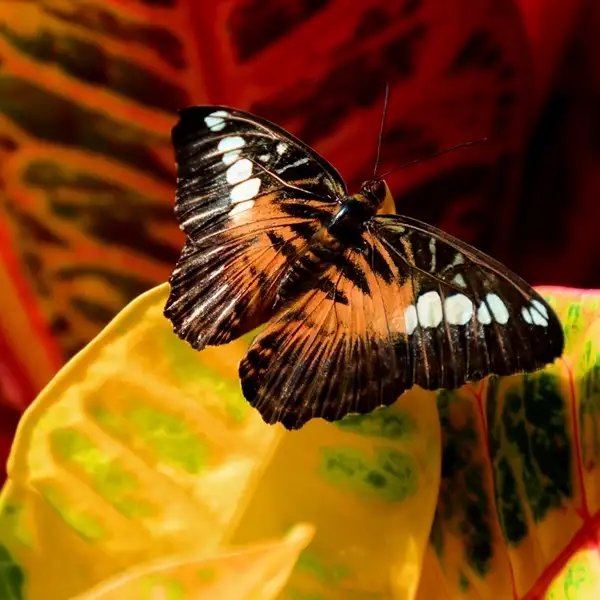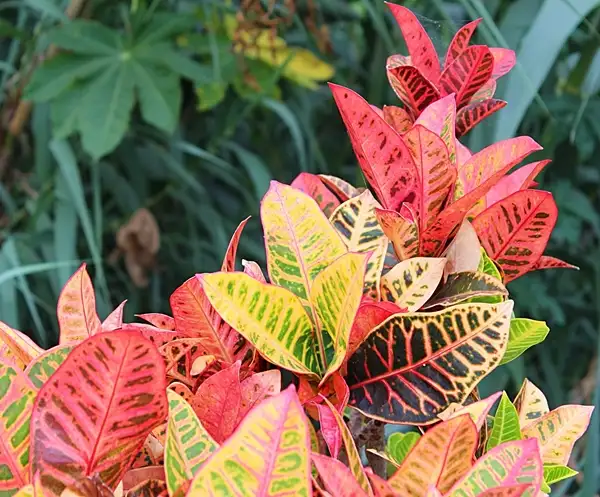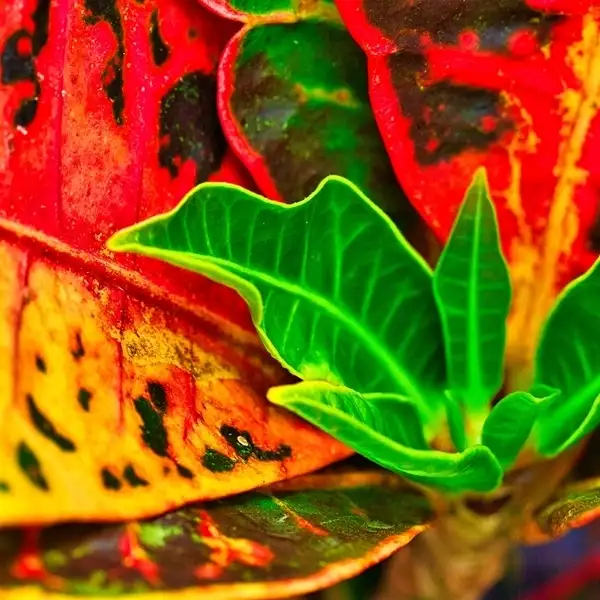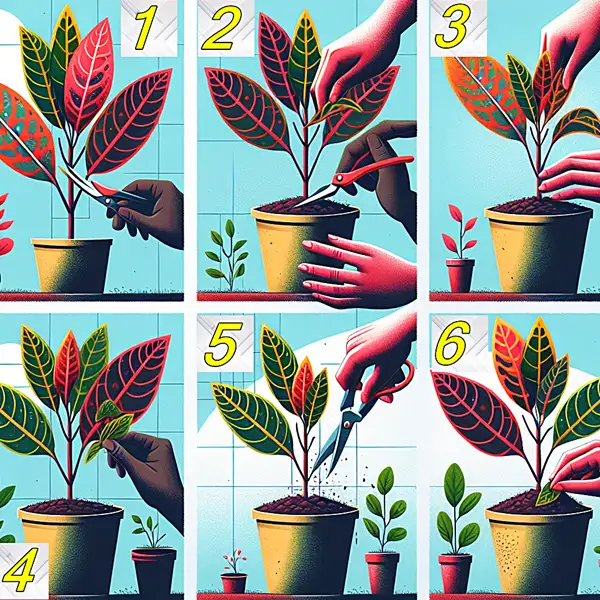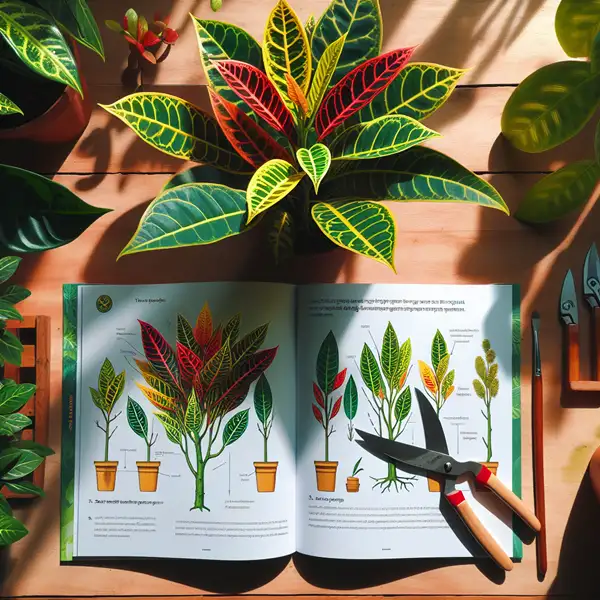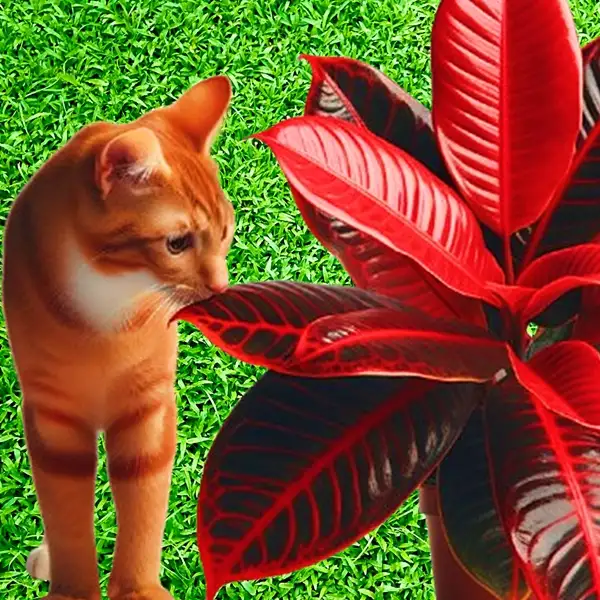Key Takeaways
| 🔎 Key Insight | 💡 What You’ll Learn |
|---|---|
| ✅ The Right & Wrong Companions | Discover what to plant with Croton and which ones to avoid for a healthy garden. |
| 🌱 Smart Gardening Techniques | Uncover essential strategies to maximize plant health, prevent pests, and boost growth naturally. |
| 🎨 Designing with Crotons | Explore expert landscaping tips for a stunning garden with layered heights, colors, and textures. |
| 🛠️ Essential Croton Care | Learn how to maintain your crotons and companion plants with the best watering, soil, and environment tips. |
Essentials of Croton Companion Planting
When deciding on what to plant with Croton plants, consider heat-tolerant species that appreciate similar growing conditions such as numerous light exposures, moist soil, and high humidity.
Keep in mind that ideal Croton companions should complement rather than compete with these spectacular shrubs; this could be by offering contrasting textures or colors.
Pairings should also provide mutual benefits like pest control or enhanced growth rates where possible – truly reflecting the spirit behind companion planting strategies.
5 Plants to Avoid Near Croton
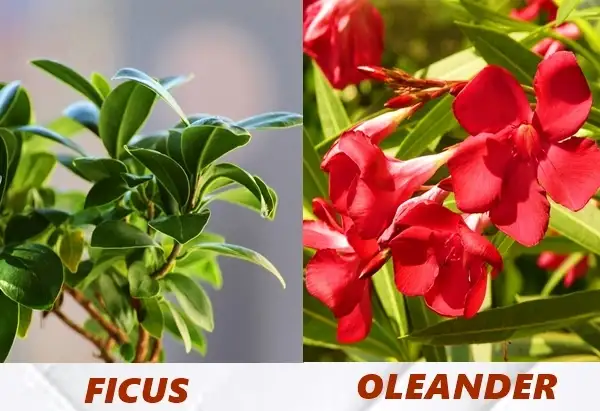
Let’s first discuss the other side which is really important in long-term maintenance. While selecting companion plants, it’s equally important to avoid certain species that may hinder Croton’s growth or create complications in the garden.
| 🔢 No. | ❌ Plant Name | 🚨 Reason to Avoid | ⚠️ Additional Notes |
|---|---|---|---|
| 1 | Ficus | Attracts pests that may damage Croton leaves | Regular pest control measures needed |
| 2 | Oleander | Highly toxic to pets and humans | Not recommended for homes with pets or children |
| 3 | Azaleas | Prefers acidic soil, which conflicts with Croton’s neutral to slightly acidic soil preference | Soil pH balance issues may hinder Croton growth |
| 4 | Pine Trees | Drops needles, which can acidify the soil and cause stress to Crotons | Can lead to excessive dryness and inhibit moisture retention |
| 5 | Boxwood | Competes aggressively for nutrients and space | Slow Croton’s growth due to root competition |
14 Best Plants to Pair with Crotons
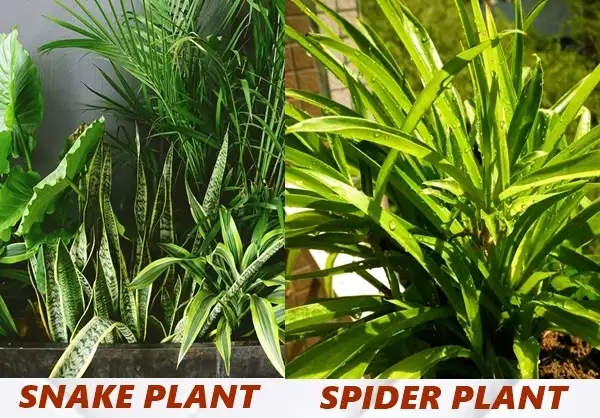
Integrating both aesthetic allure and practical considerations can shape your choice for top-quality Croton partners.
| 🔢 No. | ✅ Plant Name | 🌟 Benefits | 📝 Additional Tips |
|---|---|---|---|
| 1 | Snake Plant | Air-purifying, upright leaves contrast with Croton’s colorful foliage | Low-maintenance and adapts to different lighting conditions |
| 2 | Coleus | Vibrant foliage complements Croton’s colors | Regular trimming encourages bushy growth |
| 3 | Pothos | Adaptable to different environments; adds cascading greenery | Thrives in hanging baskets near Crotons |
| 4 | Acanthus Mollis | Dark green leaves provide a dramatic backdrop | Needs consistent watering to maintain lush foliage |
| 5 | Dracaena | Contrasts with Croton’s colors while maintaining similar care needs | Prefers indirect sunlight for best growth |
| 6 | ZZ Plant | Thrives in dry conditions, balancing Croton’s moisture needs | Great for low-maintenance indoor gardens |
| 7 | Spider Plant | Air-purifying, produces baby offshoots for added diversity | Can be placed in hanging pots near Crotons |
| 8 | Calathea | Unique patterns and colors contrast with Croton’s foliage | Thrives in similar humidity levels |
| 9 | Pennisetum Setaceum | Adds textural diversity with feathery ornamental grass | Highly heat-resistant, excellent for outdoor landscaping |
| 10 | Peace Lily | Elegant flowers enhance the tropical aesthetic | Prefers indirect light and moderate humidity |
| 11 | Banana Plants | Large leaves add dramatic height contrast | Needs ample space to grow |
| 12 | Liriope Spicata | Acts as a ground cover, preventing weeds | Produces attractive purplish flowers |
| 13 | Angelonia Angustifolia | Thrives in warm climates like Croton | Attracts beneficial pollinators |
| 14 | Philodendron | Provides lush greenery and adapts to similar humidity needs | Heart-shaped leaves add a soft, tropical feel |
Best Tips to Maximize Garden Potential with Croton Companions
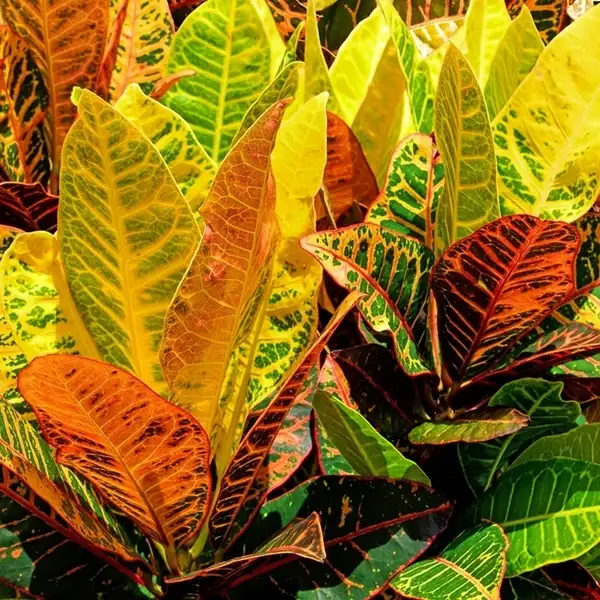
Unleashing your garden’s potential is highly achievable through strategic plant companions for your radiant crotons.
- When choosing what to plant with Croton plant, integrating multi-level planting is one expert-approved method – comprising tall, medium-sized, and low-growing species that occupy different visual fields and add interesting layers to your garden tableau.
- Choosing perennial companions ensures a long-lasting display and less replacement hassle over time.
- Using organic mulch around base plants in hot climates can keep the soil cool along with maintaining its moisture level – catering well to both crotons and other heat-sensitive species who can then focus better on their growth battle against pests or diseases instead of tackling water shortage issues.
- Encourage beneficial insects like bees and ladybugs into the fold by including pollinator-friendly flowers alongside demand-pull factors like predator-insect-attracting aromas or specific plant shapes suited for them. Marigolds are an easy choice containing all these features.
How to Care and Maintain Croton-Friendly Garden
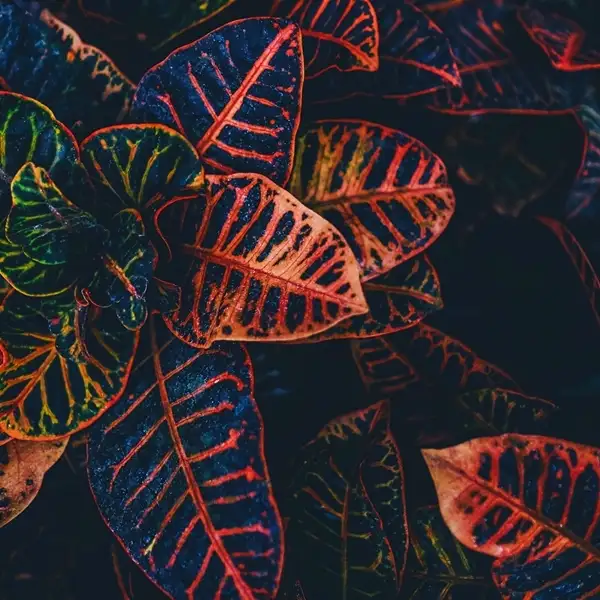
Keeping gardens thriving year-round involves inevitable troubleshooting scenarios that diligent gardeners need addressing promptly – especially shaking off common obstacles faced prospectively within our exotic realm filled with stunning crotons paired wisely amidst suitable companions.
Uniform Watering
- Uniform watering across your backyard could present concerns since some plant partners may have differing watering needs compared to thirsty tropicals like our vibrant shrubs here.
- Installing drip irrigation with adjustable valves can balance this equation effectively.
Catering
- Catering to distinct soil pH preferences among assorted species poses a worthy challenge but can be addressed by grouping plants that share similar requirements, thus limiting the need for constant adjustments.
Pest Management Strategy
- Pesky pests like aphids or spider mites could threaten your crotons’ well-being. So knowing what to plant with Croton plant to repel these pests can make all the difference.
- Deploy an integrated pest management strategy that involves diverse preventive and control methods – leverage companion plants known for their natural pest-repellent properties, regular gentle sprays of water disrupting insect life cycles, or releasing beneficial bugs into your garden patrol.
A Beautiful Sentence
As celebrated landscape architect Thomas Church once quipped-
“Gardens are a form of autobiography.”
With careful planning and some creativity, you’ll be amazed at what these dynamic planting pairs can do.
Read this Ultimate Guide with the best 9 tips, covering all aspects of how to care for Croton plants.
Frequently Asked Questions
Where is the best place to put a croton plant?
Place Crotons in bright, indirect sunlight and high humidity. They thrive on sunny windowsills or in outdoor partial shade locations.
How to landscape with crotons?
Landscape with Crotons by adding tropical companions like Banana Plants and Peace Lilies. Incorporate multi-level planting and organic mulch to retain moisture and boost growth.


